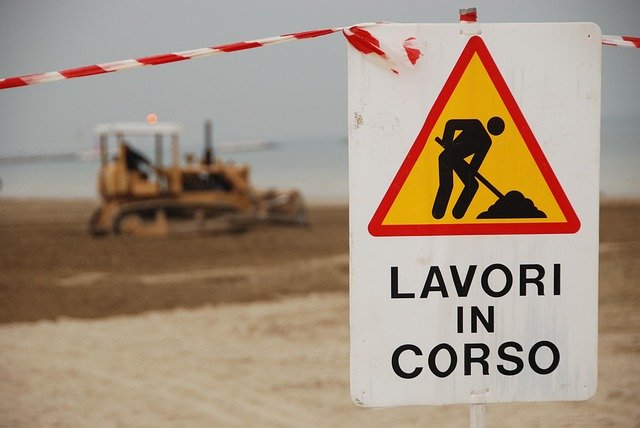Mini Bulldozer Overview - Prices, Features, Benefits and More
Mini bulldozers have become increasingly popular in recent years due to their versatility and compact size. These powerful machines offer many of the benefits of full-sized bulldozers but in a more manageable package. Whether you're a contractor, landscaper, or homeowner tackling a large project, understanding the key aspects of mini bulldozers can help you make an informed decision about whether this equipment is right for your needs.

What are the key features of Mini Bulldozers?
Mini bulldozers, also known as compact bulldozers, are characterized by their small size and maneuverability. Typically weighing between 2,000 to 18,000 pounds, these machines are significantly lighter than their full-sized counterparts. Key features of mini bulldozers include:
-
Compact design: Mini bulldozers are built to navigate tight spaces and work in confined areas where larger machines can’t operate.
-
Versatile blade: The front blade can be used for pushing, grading, and leveling materials.
-
Tracks: Most mini bulldozers use tracks instead of wheels, providing better traction and stability on various terrains.
-
Hydrostatic transmission: This feature allows for smooth operation and precise control.
-
Auxiliary hydraulics: Many models come equipped with hydraulic systems that enable the use of attachments, increasing versatility.
How does the Mini Bulldozer Pricing Structure Work?
The pricing structure for mini bulldozers can vary depending on several factors, including the manufacturer, model, size, and features. Generally, mini bulldozers are priced based on their horsepower, operating weight, and additional capabilities.
New mini bulldozers typically range from $20,000 to $100,000, with more advanced models and larger sizes commanding higher prices. Used mini bulldozers can be found for significantly less, often ranging from $10,000 to $50,000 depending on age, condition, and hours of use.
Many equipment dealers also offer rental options, which can be a cost-effective solution for short-term projects. Rental rates usually vary from $200 to $500 per day, $600 to $1,500 per week, or $1,800 to $4,500 per month, depending on the machine’s size and capabilities.
| Brand | Model | Horsepower | Operating Weight | Estimated New Price Range |
|---|---|---|---|---|
| Caterpillar | D1 | 80 HP | 9,510 lbs | $70,000 - $90,000 |
| John Deere | 450K | 69 HP | 17,810 lbs | $80,000 - $100,000 |
| Komatsu | D21A-8E0 | 49 HP | 8,710 lbs | $50,000 - $70,000 |
| Kubota | K008-5 | 10.3 HP | 2,315 lbs | $20,000 - $30,000 |
Prices, rates, or cost estimates mentioned in this article are based on the latest available information but may change over time. Independent research is advised before making financial decisions.
What are the benefits of Mini Bulldozers?
Mini bulldozers offer numerous advantages, making them an attractive option for various applications:
-
Maneuverability: Their compact size allows for easy navigation in tight spaces and urban environments.
-
Versatility: Mini bulldozers can perform a wide range of tasks, from grading and leveling to material handling and landscaping.
-
Lower operating costs: Compared to full-sized bulldozers, mini bulldozers consume less fuel and have lower maintenance costs.
-
Reduced transportation costs: Their smaller size makes them easier and less expensive to transport between job sites.
-
Minimal ground disturbance: The lighter weight of mini bulldozers results in less damage to existing landscapes and surfaces.
-
Ease of use: Many operators find mini bulldozers more user-friendly and less intimidating than larger machines.
How do the price and trim levels compare for the Mini Bulldozer?
Mini bulldozers are typically available in various trim levels, each offering different features and capabilities. The price increases with higher trim levels, which often include more powerful engines, advanced hydraulic systems, and additional comfort features for the operator.
Entry-level models are generally more basic, with standard features and lower horsepower. These are suitable for light-duty work and are the most affordable option. Mid-range trim levels offer a balance of power and features, often including improved hydraulics and more comfortable cabs. High-end trim levels provide the most power, advanced technology, and luxury features, but come at a premium price.
It’s important to consider your specific needs and budget when choosing a trim level. While higher trims offer more capabilities, they may not be necessary for all applications.
How does the Mini Bulldozer compare to its competitors?
When comparing mini bulldozers to other compact construction equipment, several factors come into play:
-
Skid steer loaders: While more versatile with attachments, skid steers generally have less pushing power and are less stable on slopes compared to mini bulldozers.
-
Compact track loaders: These offer similar versatility to skid steers but with better traction. However, they typically can’t match the blade control and grading capabilities of mini bulldozers.
-
Mini excavators: These excel at digging and trenching but lack the pushing and grading abilities of mini bulldozers.
-
Compact wheel loaders: While efficient for material handling, they don’t offer the same level of precision for grading and earthmoving tasks as mini bulldozers.
Mini bulldozers stand out for their ability to combine pushing power, grading precision, and maneuverability in a compact package. They are particularly well-suited for projects that require fine grading and earthmoving in confined spaces.
In conclusion, mini bulldozers offer a powerful and versatile solution for various construction and landscaping tasks. Their compact size, combined with impressive capabilities, makes them an attractive option for professionals and homeowners alike. By understanding their features, benefits, and how they compare to alternatives, you can make an informed decision about whether a mini bulldozer is the right choice for your project needs.




